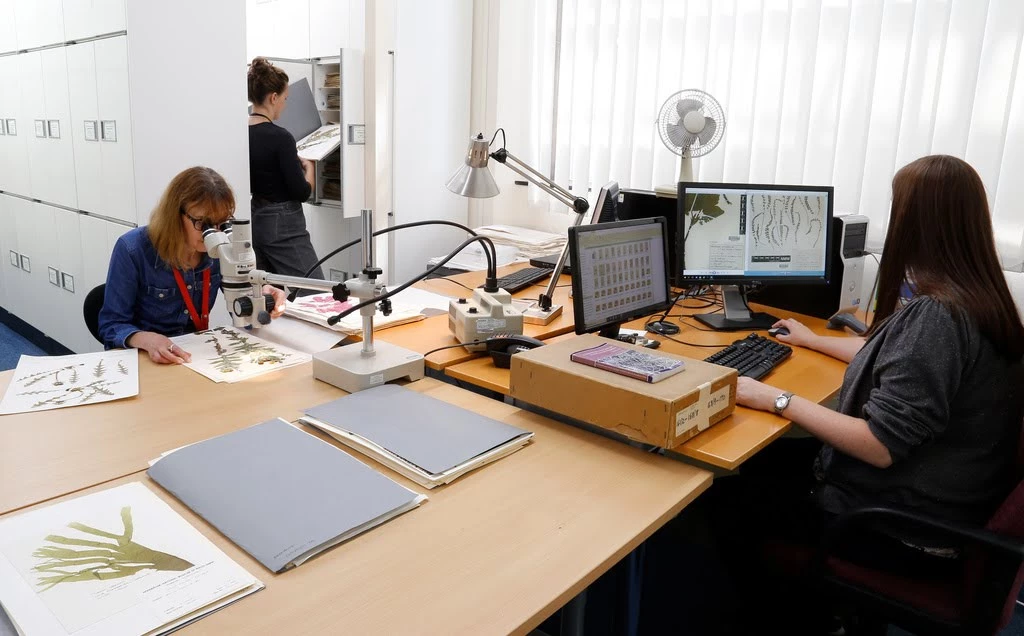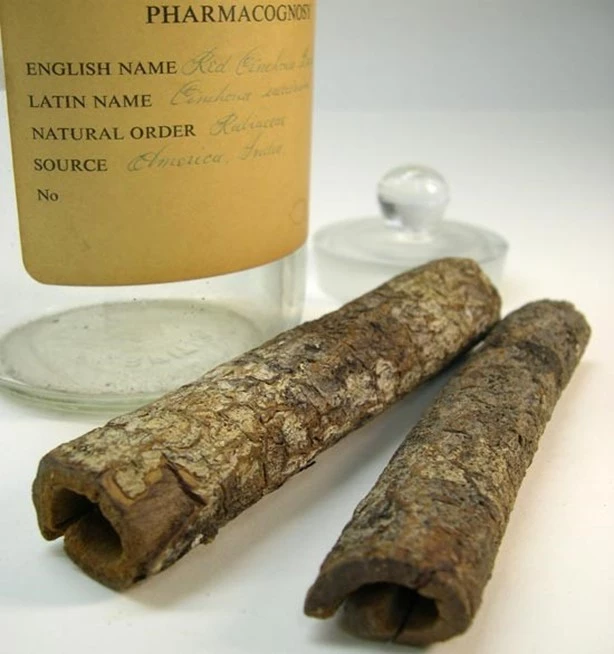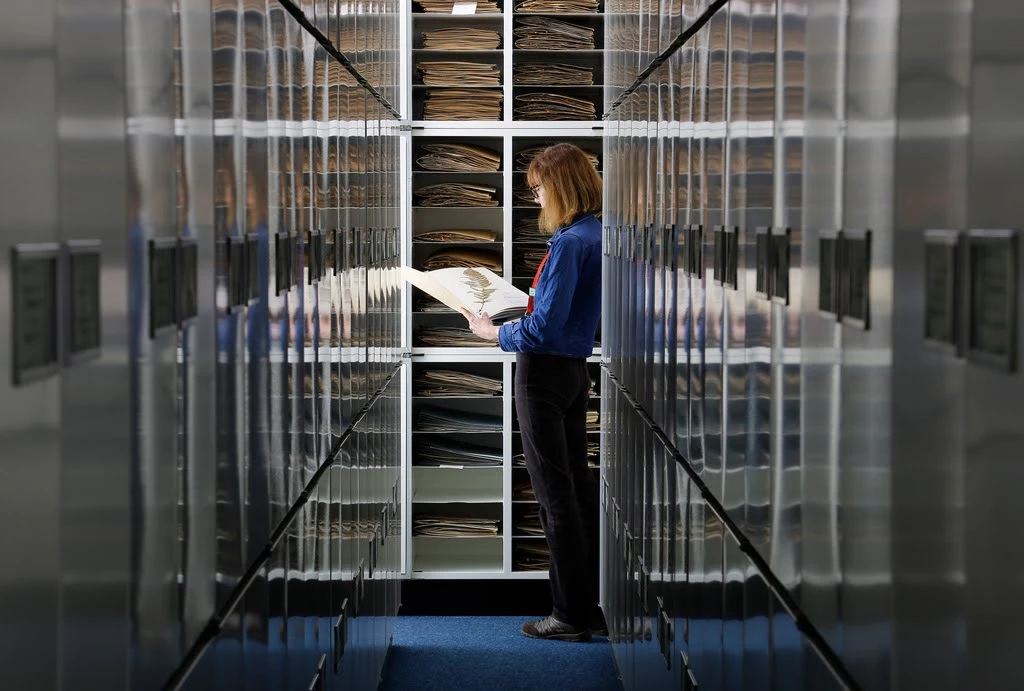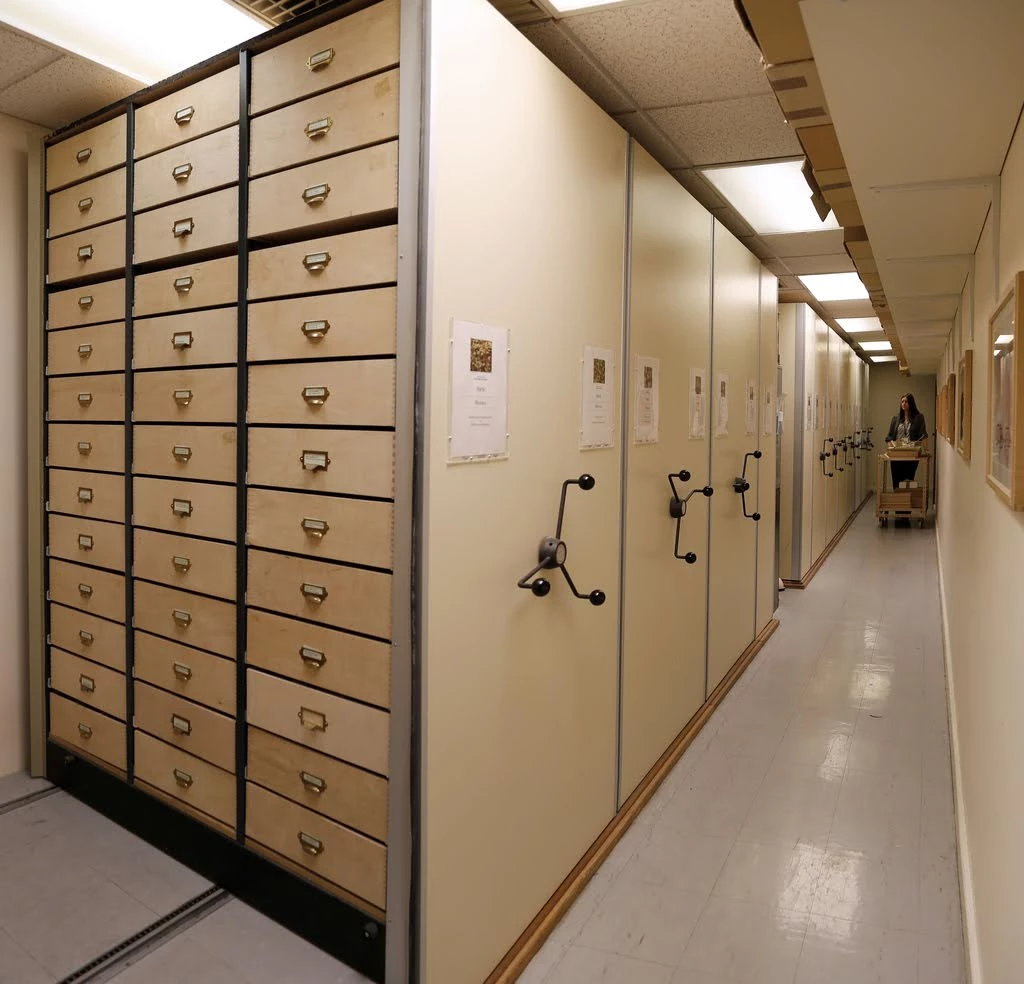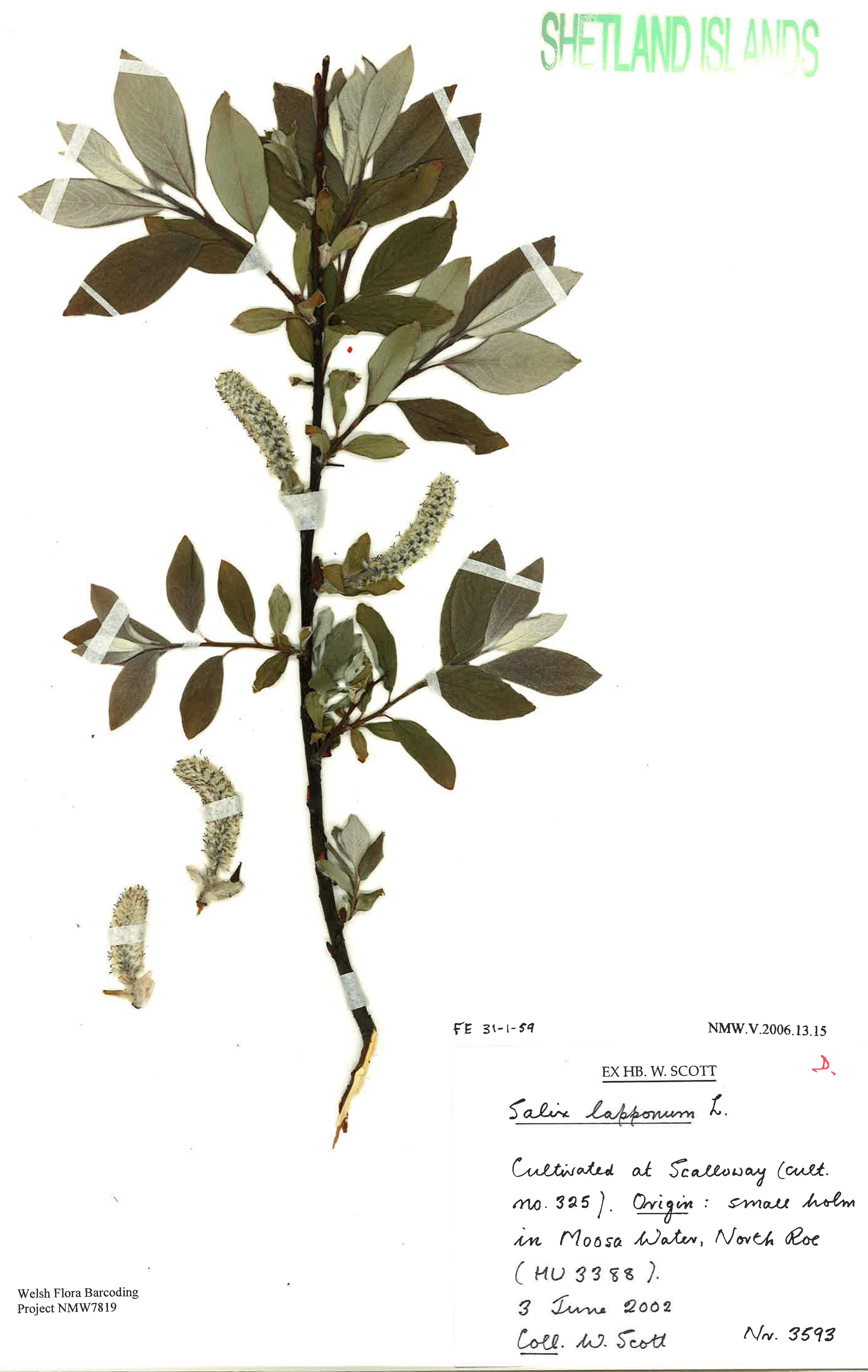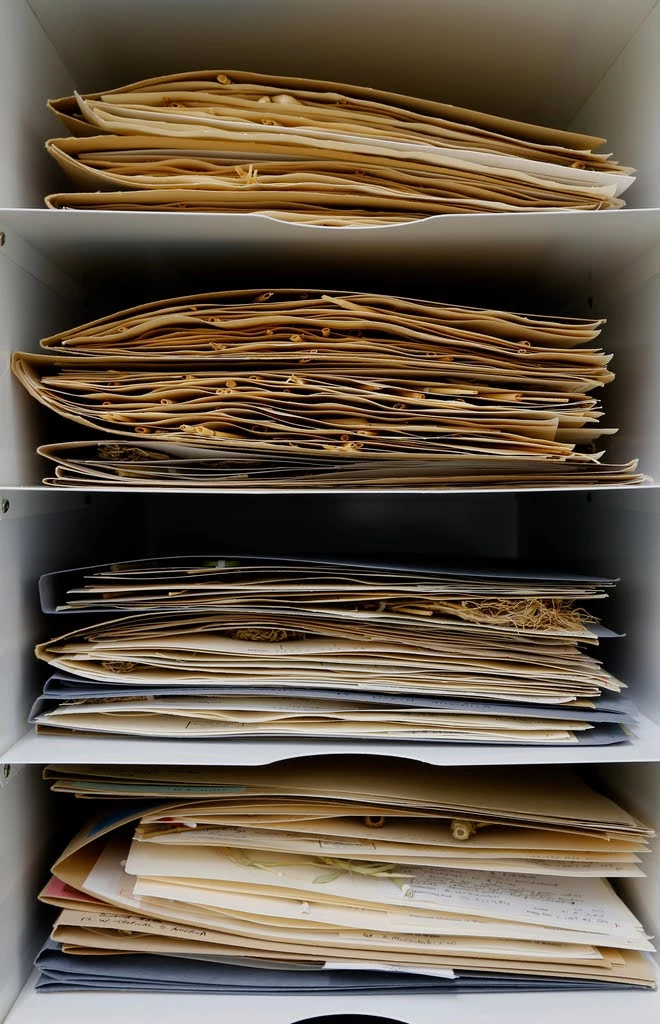Herbarium
Introduction
Did you know that National Museum Wales houses the Welsh National Herbarium?
Here we explore the herbarium and what it means. We discuss how the herbarium is stored and what can be found there as well as who can benefit from it.
What is a Herbarium?
A herbarium is a collection of preserved (mostly dried) plant specimens that have been stored appropriately and arranged systematically to ensure quick access for curators, artists, students, researchers and the general public for scientific research and education.
The Welsh National Herbarium contains vascular plants (such as flowering plants, conifers, ferns and club-mosses), bryophytes (mosses, liverworts and hornworts), lichens, fungi, slime moulds and algae. There are also botanical illustrations, models and collections relating to the use of plants by people such as spices, herbs, crops, wood and fibres. Specimens are also kept of diseased plants, keeping a record of plant infections and pest damage over time.In the vascular herbarium, specimens are arranged by plant family and genus while other plant groups such as mosses are arranged alphabetically. Specimens are stored in tall metal cabinets and in wooden drawers on roller racking, within the herbarium, which is kept at an even temperature and humidity.
Move from herbarium cabinet to herbarium cabinet, and you can delve into a huge array of plant diversity world-wide. For example one cabinet might have Black Raspberry (Rubus occidentalis from North America, and the next cabinet you open might have Laver seaweed (Porphyra species) from Pembrokeshire.
A herbarium is the only place to be if you want to study the world’s plants in one place, or even ‘just’ all plants that live across Wales!
Curators are working to scan all specimens, making accessing data and sharing specimen images and information with other institutions easier.
Difference between a Herbarium and Herbaria
Herbaria is the plural and herbarium is the singular, so you have one herbarium and many herbaria. There are thousands of herbaria around the world and each one is the home of historical plant records covering hundreds of years to the present day. The oldest plants in National Museum Wales are 300 years old. They are plant time capsules containing unique information that would otherwise be lost.
The herbarium is checked regularly for infestations, and strict guidelines are put in place to ensure all specimens remain in pristine condition. Any loss or damage to specimens would be catastrophic because of the irreplaceable nature of collections.
It is the curator’s role to ensure that all specimens are kept in good condition indefinitely, stored according to the correct guidelines. The herbarium is checked regularly for infestations, and strict guidelines are put in place to ensure all specimens remain in pristine condition. Herbaria contain ‘type specimens’, individual specimens that a scientist has used to base their description on when describing a new species. Any loss or damage to specimens would be catastrophic because of the irreplaceable nature of collections.
Who benefits from herbaria?
Botanists
The most obvious field that benefits from herbaria is botany; botanists are plant scientists that study and perform experiments on plants. Some herbarium specimens are hundreds of years old, so this gives botanists a unique chance to look at how plant life has changed over time.
There are many studies that can be performed on herbarium entries, and these usually depend on the specialist skills of the researcher looking at them. Botanists can use herbaria and botanical specimens to answer questions such as:
- Where do plants live and how does this change over time?
- What is the diversity and abundance of a certain plant species?
- Where can you find rare plants? An important question for conservation.
- How have plants changed their flowering time (phenology) in response to climate change? For example some plants flower earlier due to climate change that’s occurred since the industrial revolution.
- When were invasive non-native species first recorded in, for example, Wales?
- How have plants changed their morphology over time? For example the density of stomata when cross referenced to fossil plants in the museum, shows evidence for adaptation by plants to changes in carbon dioxide in our atmosphere millions of years ago.
Other Scientists
It’s not exclusively botanists that benefit from herbaria, other branches of science can also use the botanical collections in their research. Biologists, climate scientists, conservationists and ecologists can benefit from the specimens found in herbarium and frequently use collections for ongoing research.
Herbaria can answer questions such as:
- When did a plant pest first arrive in Wales?
- How do plants respond to climate change?
- Has a plant been found in a particular habitat?
Historians
Specimens stored in the herbarium can give insights into the daily life of people in history. Collections like the economic botanic collection contain plants and botanical items that have had an important domestic, medicinal or cultural use to society. This collection contains herbs, dyes, textiles and culturally important items that are kept to demonstrate their importance to world culture through displays, museum visits and exhibitions. Historians can also use herbarium collections for project collaborations, for records of discoveries and for exploration.
Artists
Artists have, and continue to draw inspiration from herbaria, using the unique perspective from nature that only a herbarium collection can give.
Teachers / People in education
Herbaria and museums are a great resource for education. Curators at National Museum Wales use the collections to help tell stories of history, culture and science in the museum galleries, exhibitions, for behind the scenes tours, at events and online.
What can be found in Herbaria?
Vascular Plants
Curators aim to preserve all the reproductive (eg fruits, seeds) and vegetative organs (eg stems, leaves) of each plant, which are critical for species identification. Any plant parts that can’t be easily pressed, e.g. tubers, bulbs, fleshy stems, large flowers, cones, fruits, etc are usually dried and placed in boxes and then cross referenced with the pressed specimen.
Bryophytes (Mosses and Liverworts)
Algae
Algae are a very diverse group of non-flowering aquatic organisms that contain chlorophyll, so can photosynthesise to produce energy for themselves. Some can cause algal blooms in lakes and the sea as well as forming ‘pond scum’. However, algae are very important to the Earth, and it’s estimated that they produce 70-80% of the Earth’s atmospheric oxygen. The term ‘algae’ covers a wide range of organisms including seaweed such as kelp, filamentous species and microscopic algae such as diatoms and dinoflagellates. These groups are not all related and can exist in a huge range of different forms! In Wales, red laver seaweed (Porphyra) is collected to make laverbread which is often served as part of a Welsh breakfast.Collecting and preserving algae can be done in a few different ways; storing them in liquid, on a microscope slide or dry preserving the specimen onto herbarium paper. What method is best usually depends on the species being collected and its properties.
Fungi
Fungi are organisms with often highly complex chemical makeups that occupy almost every habitat on Earth. Fungi are studied by mycologists and are not related to plants so are placed in their own kingdom.
Surprisingly, most fungi are hidden to us, many dwelling underground connected by a network of long thin cells called hyphae. It is only a small portion of fungi that produce fruiting bodies we know as toadstools and mushrooms. For the herbarium, the best way to preserve fungi fruiting bodies is to air dry them (cutting them into slices first if they are large), and then store in packets or boxes. Without fungi we wouldn’t have beer, cheese or perhaps many plants. Fungi help decomposition, making nutrients available to plants in the soil. Many trees have symbiotic relationships with fungi with nutrients and water transported directly into the tree roots. Fungi even help plants to communicate with each other within the soil using their underground networks.
Lichens
Lichens are unique in plant taxonomy because they are an organism composed of two separate organisms in a symbiotic relationship. A lichen is composed of a fungus, and either an algal cell or bacterial cell. The fungal portion of the organism extracts organic carbohydrates and nutrients from the environment, and the algal/bacterial portion of the organism undergoes photosynthesis to capture energy from the sun. Because lichen are difficult to extract from their environment, commonly they are collected still attached to their substrate (rocks, bark, soil crusts) and stored in boxes.How to make a Herbarium
Making your own herbarium is a fairly simple process, it doesn’t require many materials.
Please note that the following instructions are for preparing pressing plants such as ferns and flowers. Different preservation techniques are used for seaweeds, fungi and mosses.
Step #1: Head out to a local field or forest, or even your back garden and look for interesting specimens to use. Never pick rare or endangered plants and always get permission from the landowner. Use the rule of 1 in 20 - only take a plant if there are another 19 in the same place. Always follow the Botanical Society of Britain and Ireland’s code of conduct.
Step #2: Once you’ve found something to add to your collection, take lots of photos for future reference showing where the plant is growing and features that could help with identification. Make notes about its appearance that may be lost in the preservation process such as colour, stem shape and overall height. Also note down the date, where the plant was found including map reference and the habitat; is it in the shade, sheltered by trees or on a slope?
Step #3: Once you’re happy you’ve captured all the details, carefully take a few cuttings of the plant, make sure you don’t damage it unnecessarily. Take care to select parts that contain as many plant parts as possible eg. leaves showing different shapes, stems, flowers and seeds.
Step #4: Use a thick bag or container to carry your cuttings home. There you can start the process of pressing your plants.
How to press plants for a Herbarium
Once you’ve arrived home with your plants you can start preparing them for pressing.
Step #1: Create a homemade plant press (you can use hardboard or plywood). Place one board flat on a hard level surface and place several sheets of newspaper on top, then add a sheet of blotting paper.
Step #2: Prune and brush clean your cuttings. Remove larger fleshy fruits which will not press well.
Step #3: Place your specimen on top of the blotting paper. Arrange it so that as little as possible is overlapping to aid the drying process, removing spare branches if needed. If possible, turn over a leaf so that the underside can be easily seen on the herbarium specimen once it is pressed.
Step #4: Place another layer of blotting paper on top of your plant, and another layer of newspaper on top of that.
Step #5: Close the press by putting another piece of hardboard or plywood on top of your specimen. Use books/bricks or similar heavy items to press your cutting flat.
Step #6: You will need to keep the plant in the press for between 2-21 days, depending on the thickness and type of plant you’ve chosen to press. Check the plant once a day to keep an eye on progress. Replace the newspaper and blotting paper within the press if they’re damp.
How to make a Herbarium sheet
Once you’re happy that your specimen is dry and pressed you can create your herbarium sheet.
Step #1: Place your plants on a sheet of card . (Top tip: If possible, use conservation-grade or acid free card, it doesn’t break down as quickly as ordinary types of paper, which means your herbarium will last for much longer).
Step #2: Attach the plant to the sheets of paper at strategic points with short thin strips of acid free card (see image). Cut the strips to roughly 2-4mm width – so that they are relatively easy to cut and handle but won’t cover too much of the plant. Place a small amount of glue at either end of the strip so that the plant itself doesn’t get glue on. Then place the strip over a stem or leaf tip and press the glued ends onto the sheet. (Top tip: PVA glue will work for this or use conservation grade EVA that lasts forever).
Step #3: In the bottom right hand corner using a pencil or a pen with colour fast, fade proof ink, write the name of the plant along with all the information you recorded when collecting it. Don’t forget to add your name as the collector, if the specimen is sent to a herbarium this is very valuable information.
You have now completed your first herbarium sheet.
How to prepare a Herbarium file
Repeat the above process and build on your collection of herbarium sheets to create a herbarium.
File the specimens away flat in boxes and never turn them upside down as pieces may fall off.
Make sure you create labels for each sheet and use the information you collected when picking your plants to add names to and classify each specimen.
As you add to the collection, decide how to organise it.
You could arrange it alphabetically or keep plants that related to each other together in their families.
Whichever arrangement you choose, make sure it’s the right one for you as it will become much more time consuming to rearrange as your collection grows. Imagine trying to rearrange the 750,000 specimens in National Museum Wales!
“This article includes material written originally by Amy Wyatt, a Professional Training Year student at Amgueddfa Cymru in 2018, and was extended by botany curators Katherine Slade & Sally Whyman.”